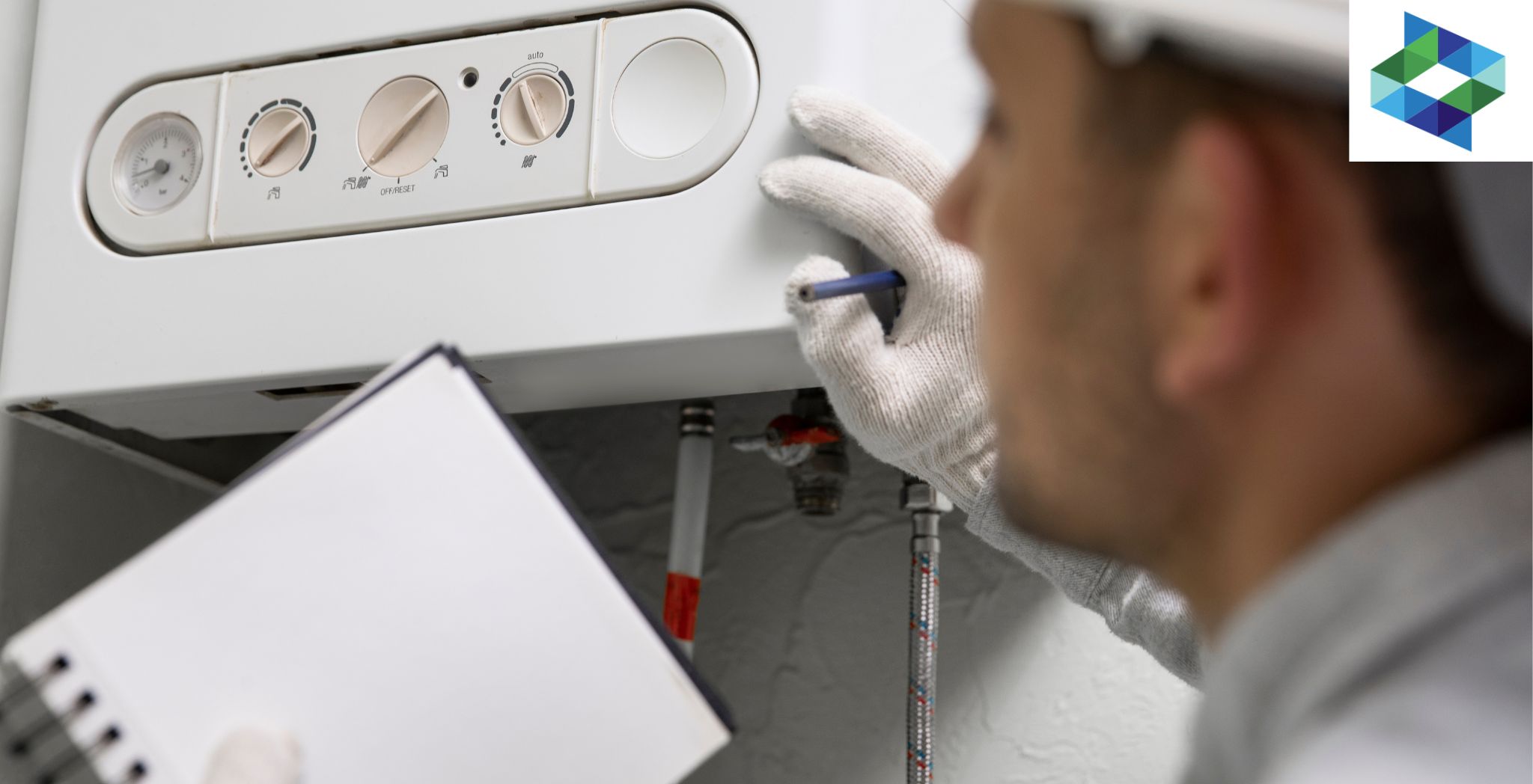Common heating systems are vital for keeping houses comfortable throughout the winter months.
Choosing the right heating system can significantly affect energy efficiency, comfort levels, and utility costs.
Understanding how these systems work and identifying the most common heating system options available can help homeowners make informed decisions.
This guide delves into the most common heating systems, how they function, and what makes them so prevalent in homes across various climates.
1. The Most Common Heating System
However, heating systems play a vital role in providing warmth to homes, and the most common ones are designed for both efficiency and comfort. Among the various types available, forced air systems are the most widely used in the United States.
These systems, which include furnace heating system and heat pumps, distribute heated air through ducts and vents, providing consistent warmth throughout a home.
They are versatile, providing winter heating and summer cooling when paired with an air conditioning unit.
Moreover, they offer fast and efficient heating compared to other systems.
They are compatible with modern heating systems and smart home systems, making them easy to control and energy-efficient.
Forced air systems work by heating air and distributing it throughout the home. The heating process involves burning fuel (natural gas, oil, or propane) in a furnace or using electric resistance to generate heat. Heating services ensure that this heated air is blown through a series of ducts and released through vents into different rooms.
The central unit responsible for heating the air. A fan that pushes the heated air through the ducts. A network of tubes carrying warm air to different parts of the home. A control device that regulates the system by sensing the temperature and turning the furnace or heat pump on or off as needed.
Forced air systems also have filters that clean the air before it circulates, improving indoor air quality. Some systems can also integrate with humidifiers or air purifiers to enhance comfort.
2. Types of Forced Air Heating Systems
Although forced air systems are standard, they can differ depending on the type of fuel used and the specific heating method. Below are some of the most popular variants of forced air systems:
A. Natural Gas Furnace
However, natural gas furnaces are the most common heating system in the United States. They are highly efficient and relatively inexpensive, particularly in regions with easy access to natural gas.
A natural gas furnace ignites natural gas in a burner. The heat generated is transferred to air, then distributed throughout the home via ducts. Modern natural gas furnaces can achieve efficiency ratings as high as 98%, making them an energy-efficient option.
B. Electric Furnace
Electric furnaces are another type of forced air heating system. While they are less common than natural gas furnaces, they are used in regions where electricity is more affordable or where natural gas isn’t available.
An electric furnace uses electric resistance heating elements to warm the air. These systems are often more expensive to run than gas furnaces due to the cost of electricity, but they have fewer maintenance requirements since they need a burner or gas line.
C. Heat Pump
However, heat pumps are a flexible solution that function as a cooling and heating source. Heat pumps move heat into a house from the earth (or outside air, in the case of geothermal systems) as opposed to producing heat themselves.
In heating mode, a heat pump removes heat from the atmosphere outside or surface and moves it indoors through a refrigerant cycle. When cooling is needed, the process is reversed, and heat is transferred from inside the home to the outside.
D. Propane Furnace
Propane furnaces are similar to natural gas but use propane as fuel. They are common in rural areas where natural gas is unavailable, but propane can be delivered and stored in tanks.
A propane furnace operates like a natural gas furnace, burning propane to generate heat. The warm air is distributed throughout the home using a blower and duct system. Propane furnaces are an excellent option for homes on the natural gas grid.
3. Why Forced Air Systems Are So Popular
Moreover, forced air systems are the most common heating systems for several reasons. One of the main factors is the speed at which they can heat a home. Unlike radiant heating systems, infloor heating systems, or boilers that slowly warm surfaces, forced air systems can quickly raise the temperature, providing immediate comfort.
A. Cost-Effectiveness
Forced air systems, especially natural gas furnaces, are cost-effective to install and run. The relatively low cost of natural gas and electricity (in certain regions) makes these systems attractive to homeowners.
B. Dual Functionality
When paired with air conditioners, forced air systems can also provide cooling in the summer, making them a year-round solution.
C. Compatibility with Smart Thermostats
Many forced air systems are compatible with smart thermostats, which allow homeowners to optimize their energy usage and control the system remotely. This enhances convenience and can reduce energy bills.
While forced air systems are standard, they have their drawbacks. Some of the challenges homeowners face with these systems include:
D. Noise
The blower fan and air movement through ducts can create noise, which can be disruptive in quieter homes.
E. Air Quality Concerns
If not correctly maintained, forced air systems can circulate dust, allergens, and other contaminants throughout the home.
F. Energy Loss
Heat loss can occur in poorly insulated ducts, leading to inefficiency and higher energy bills.
4. Other Common Heating Systems
Though forced air systems are dominant, other heating systems are standard in specific regions or types of homes. These include radiant heating, boilers, and electric baseboard heating.
A. Radiant Heating Systems
Radiant heating systems deliver heat directly to floors, walls, or ceilings, warming the surfaces and the surrounding air. infloor heating panels, a type of radiant floor heating, able to run on electricity, hot water, or hydronic systems. This common heating system is prevalent in bathrooms and areas with tile floors.
Radiant heating uses electric coils or water-heated tubes embedded in the floor or walls to radiate heat. The surfaces in the room absorb this heat, which then warms the air. Radiant heating provides consistent, comfortable warmth without the noise and air quality issues associated with forced air systems.
B. Boiler Systems
Boiler systems, often used in older homes or multi-family buildings, heat water and distribute the hot water or steam through pipes to radiators or radiant floor systems. These systems provide consistent and even heating and are prevalent in colder climates.
A boiler heats water, then travels through pipes to radiators or systems of underfloor heating. The radiators or floors radiate heat into the room, creating a warm and cozy environment. Moreover, boilers are typically powered by natural gas, oil, or electricity.
C. Electric Baseboard Heating
Electric baseboard heating systems are standard in homes where ductwork isn’t feasible, such as in apartments or the best heating system for house. These systems are typically installed along the baseboards of rooms and use electric resistance to generate heat.
Electric baseboard heaters warm the air by passing electricity through heating elements inside the unit. The warm air rises, and cooler air is drawn in from below to create a natural convection cycle. While these systems are easy to install and control, they can be expensive to run due to high electricity costs.
5. Choosing the Right Heating System for Your Home
However, selecting the right heating system depends on various factors, including climate, home size, and energy costs. Homeowners should consider the following when choosing a heating system:
A. Climate
In colder climates, systems that provide consistent and efficient heating, such as boilers or radiant heating, may be preferred. Heat pumps or forced air systems can offer heating and cooling in milder climates
B. Energy Costs
The cost of natural gas, electricity, propane, or oil in a given area can impact the overall affordability of a common heating system. Choosing the most cost-effective fuel source is critical to minimizing utility bills.
C. Home Size and Layout
Larger homes may require more robust heating systems, while smaller homes may benefit from more localized options like electric baseboard heaters.
D. Efficiency
Energy-efficient systems can save homeowners money in the long run. Look for systems with high-efficiency ratings, such as condensing boilers or furnaces with high Annual Fuel Utilization Efficiency (AFUE) ratings.
6. Maintaining Your Heating System
Regardless of your common heating system type, regular maintenance is essential to ensure it runs efficiently and lasts many years. Here are some essential maintenance tips for standard heating systems:
A. Change Filters
For forced air systems, regularly changing air filters can prevent dust buildup and improve indoor air quality.
B. Schedule Annual Inspections
Professional inspections can catch issues early and ensure the system operates efficiently.
C. Clean Ducts
For homes with ductwork, periodic duct cleaning can help prevent the circulation of dust and allergens.
D. Check Thermostats
Ensure that your thermostat is calibrated correctly and functioning properly. Moreover, consider upgrading to a smart thermostat for more control over your common heating system.
Conclusion
Common heating system are essential for keeping a cozy home, and understanding how they work can help homeowners make informed decisions about which system is best for their needs.
The most common heating systems, such as forced air, offer a combination of efficiency, speed, and versatility, making them ideal for many homes.
However, other systems, like radiant heating or boilers, may be better suited for certain climates or home layouts. Regardless of the system, regular maintenance is essential to keep it running smoothly and efficiently.


